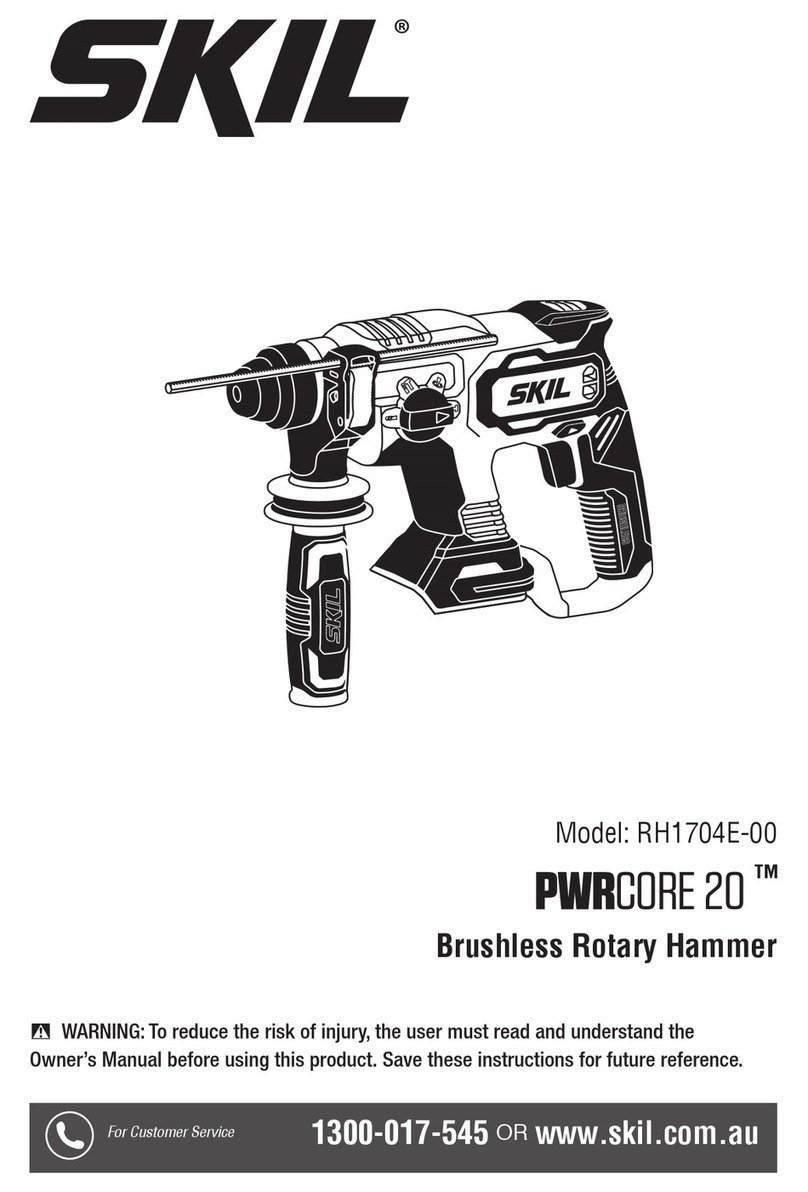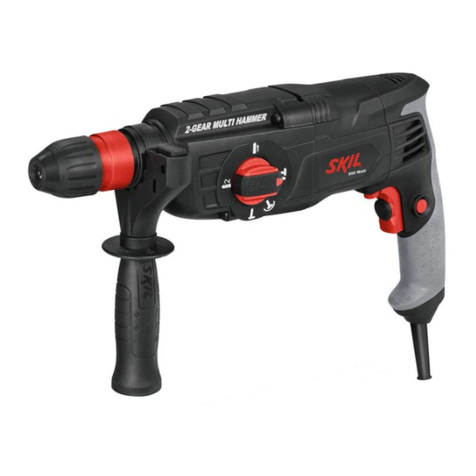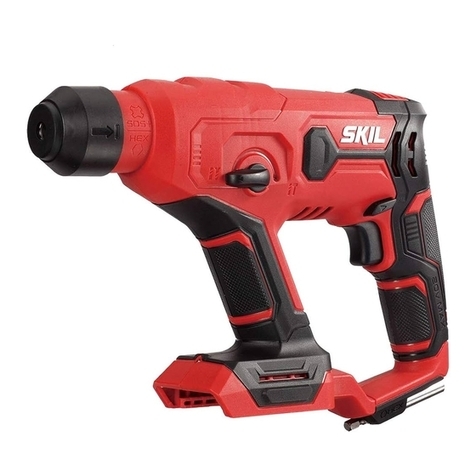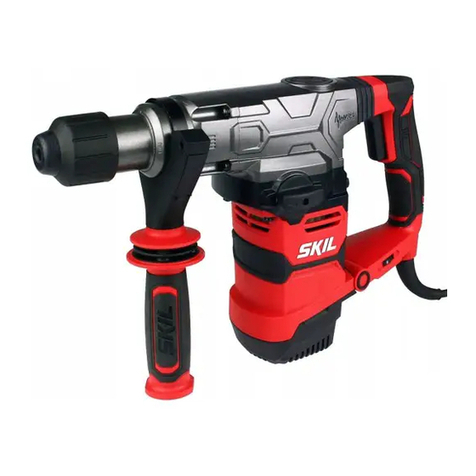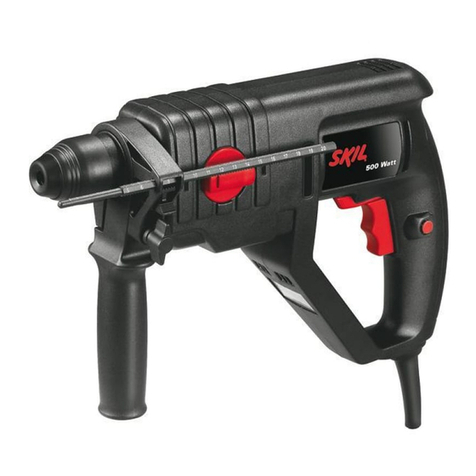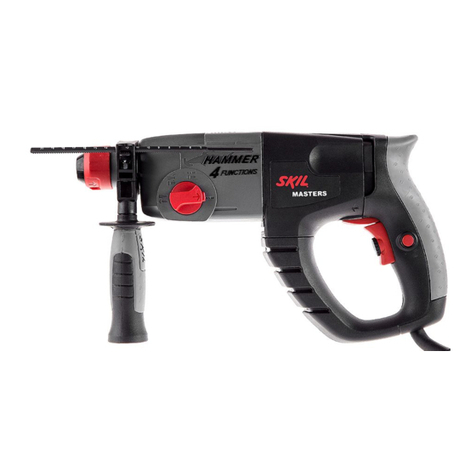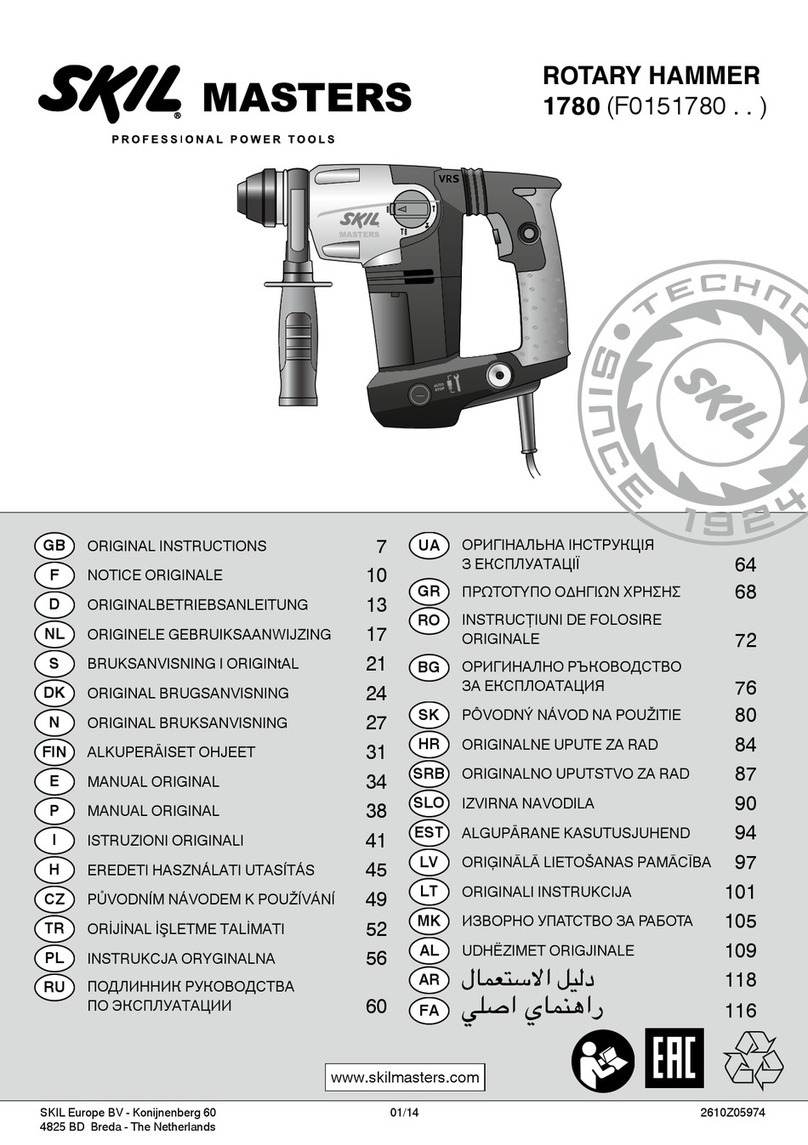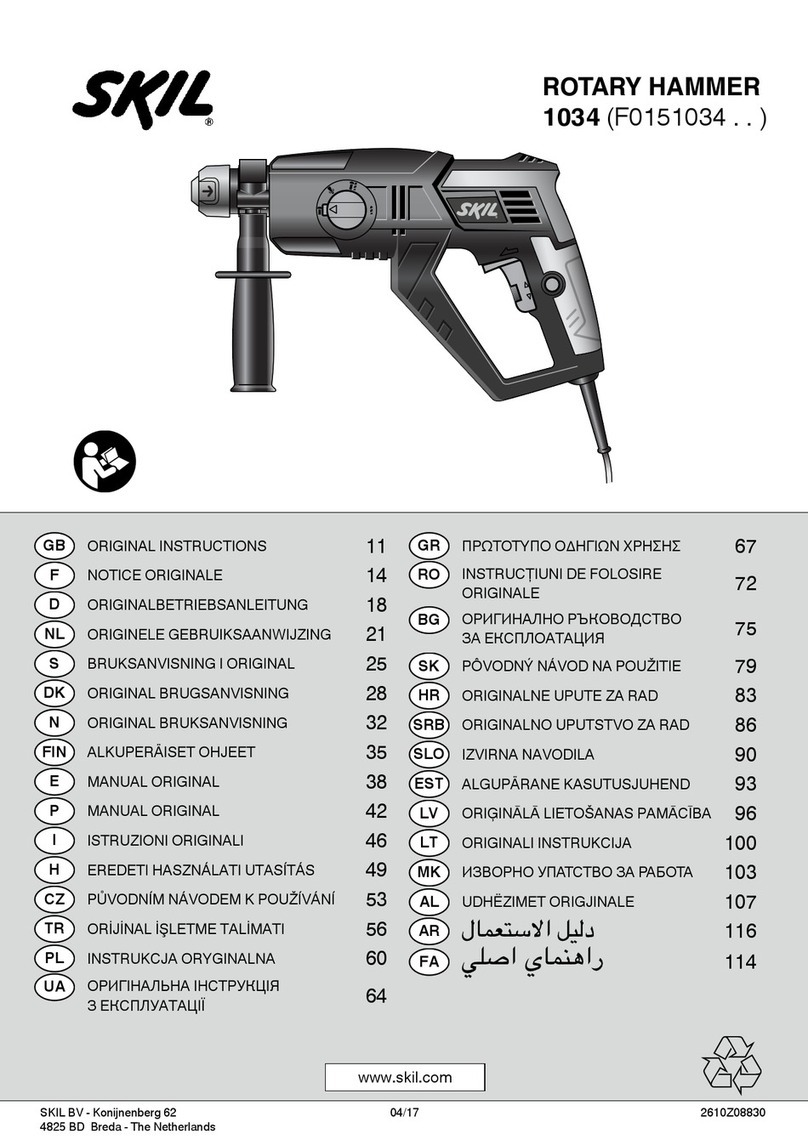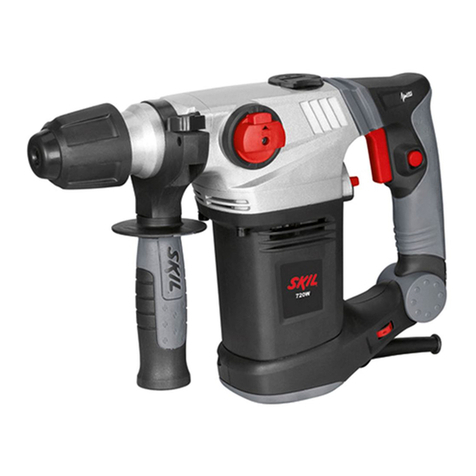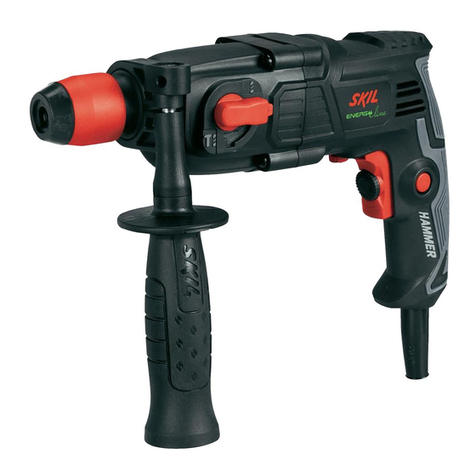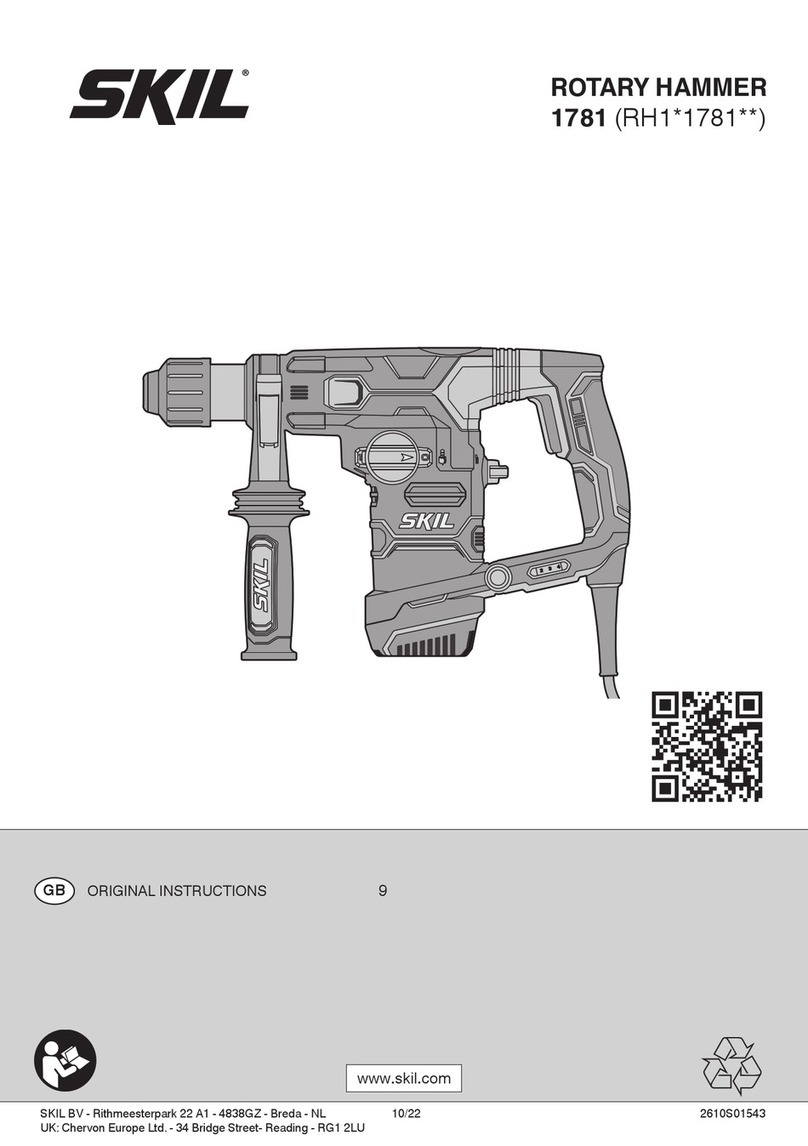
2
1034
EU Declaration of conformity
Rotary hammer Article number
We declare under our sole responsibility that the stated products comply with all
applicable provisions of the directives and regulations listed below and are in
conformity with the following standards.
Technical le at:
*
Déclaration de conformité UE
Marteau perforateur Numéro d’article
Nous déclarons sous notre propre responsabilité que les produits décrits sont en
conformité avec les directives, règlements normatifs et normes énumérés
ci-dessous.
Dossier technique auprès de:
*
EU-Konformitätserklärung
Bohrhammer Sachnummer
Wir erklären in alleiniger Verantwortung, dass die genannten Produkte allen
einschlägigen Bestimmungen der nachfolgend aufgeführten Richtlinien und
Verordnungen entsprechen und mit folgenden Normen übereinstimmen.
Technische Unterlagen bei:
*
EU-conformiteitsverklaring
Boorhamer Productnummer
Wij verklaren op eigen verantwoordelijkheid dat de genoemde producten voldoen
aan alle desbetreende bepalingen van de hierna genoemde richtlijnen en
verordeningen en overeenstemmen met de volgende normen.
Technisch dossier bij:
*
EU-konformitetsförklaring
Borrhammare Produktnummer
Vi förklarar under eget ansvar att de nämnda produkterna uppfyller kraven i alla
gällande bestämmelser i de nedan angivna direktiven och förordningarnas och att
de stämmer överens med följande normer.
Teknisk dokumentation:
*
EU-overensstemmelseserklæring
Borehammer Typenummer
Vi erklærer som eneansvarlige, at det beskrevne produkt er i overensstemmelse
med alle gældende bestemmelser i følgende direktiver og forordninger og
opfylder følgende standarder.
Tekniske bilag ved:
*
EU-samsvarserklæring
Borhammer Produktnummer
Vi erklærer under eneansvar at de nevnte produktene er i overensstemmelse med
alle relevante bestemmelser i direktivene og forordningene nedenfor og med
følgende standarder.
Teknisk dokumentasjon hos:
*
EU-vaatimustenmukaisuusvakuutus
Poravasara Tuotenumero
Vakuutamme täten, että mainitut tuotteet vastaavat kaikkia seuraavien direktiivien
ja asetusten asiaankuuluvia vaatimuksia ja ovat seuraavien standardien
vaatimusten mukaisia.
Tekniset asiakirjat saatavana:
*
Declaración de conformidad UE
Martillo perforador Número de artículo
Declaramos bajo nuestra exclusiva responsabilidad, que los productos
nombrados cumplen con todas las disposiciones correspondientes de las
directivas y los reglamentos mencionados a continuación y están en conformidad
con las siguientes normas.
Documentos técnicos de:
*
Declaração de conformidade CE
Martelo perfurador
Número do produto
Declaramos sob nossa exclusiva responsabilidade que os produtos mencionados
cumprem todas as disposições e os regulamentos indicados e estão em
conformidade com as seguintes normas.
Documentação técnica pertencente à:
*
Dichiarazione di conformità UE
Martello perforatore Codice prodotto
Dichiariamo sotto la nostra piena responsabilità che i prodotti indicati sono
conformi a tutte le disposizioni pertinenti delle direttive e dei regolamenti elencati
di seguito, nonché alle seguenti normative.
Documentazione tecnica presso:
*
EU konformitási nyilatkozat
Fúrókalapács Cikkszám
Egyedüli felelőséggel kijelentjük, hogy a megnevezett termékek megfelelnek az
alábbiakban felsorolásra kerülő irányelvek és rendeletek valamennyi idevágó
előírásainak és megfelelnek a következő szabványoknak.
Műszaki dokumentumok megőrzési pontja:
*
EU prohlášení o shodě
Vrtací kladivo Objednací číslo
Prohlašujeme na výhradní zodpovědnost, že uvedený výrobek splňuje všechna
příslušná ustanovení níže uvedených směrnic a nařízení a je v souladu s
následujícími normami.
Technické podklady u:
*
AB Uygunluk beyanı
Kırıcı-delici Ürün kodu
Tek sorumlu olarak, tanımlanan ürünün aşağıdaki yönetmelik ve direktiflerin
geçerli bütün hükümlerine ve aşağıdaki standartlara uygun olduğunu beyan
ederiz.
Teknik belgelerin bulunduğu yer:
*
Deklaracja zgodności UE
Młot udarowo-obrotowy Numer katalogowy
Oświadczamy z pełną odpowiedzialnością, że niniejsze produkty odpowiadają
wszystkim wymaganiom poniżej wyszczególnionych dyrektyw i rozporządzeń,
oraz że są zgodne z następującymi normami.
Dokumentacja techniczna:
*
Заявление о соответствии ЕС
Перфоратор Товарный номер
Мы заявляем под нашу единоличную ответственность, что названные
продукты соответствуют всем действующим предписаниям нижеуказанных
директив и распоряжений, а также нижеуказанных норм.
Техническая документация хранится у:
*
Заява про відповідність ЄС
Перфоратор Товарний номер
Мизаявляємо під нашу одноособову відповідальність, що названі вироби
відповідають усім чинним положенням нищеозначених директив і
розпоряджень, а також нижчеозначеним нормам.
Технічна документація зберігається у:
*






